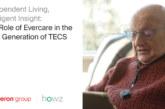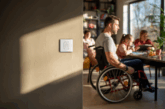 Matthew Warburton, Policy Adviser at the Association of Retained Council Housing (ARCH), discusses the new tenant satisfaction measures, which are being introduced by The Regulator of Social Housing as part of a new system for assessing how well social landlords in England are performing.
Matthew Warburton, Policy Adviser at the Association of Retained Council Housing (ARCH), discusses the new tenant satisfaction measures, which are being introduced by The Regulator of Social Housing as part of a new system for assessing how well social landlords in England are performing.
The requirement on social landlords to collect information for the new tenant satisfaction measures (TSMs) came into effect from 1st April. For some of the TSMs, this means landlords should already be collecting the relevant information, for example, on the number of repairs carried out within target times, or the number of complaints received.
For the 12 TSMs to be collected from tenant participation surveys, the task is to commission and schedule appropriate surveys at some point during 2023/24 and arrange to repeat them annually. But for other indicators, including arguably the six most challenging, 31st March 2024 has become an unyielding deadline that is likely furrowing brows and keeping managers awake at night — or ought to be — in many councils and housing associations just now.
The six TSMs in question are RP01 — the number of homes that do not meet the Decent Homes Standard, and the five BS indicators that relate to the percentage of gas, fire, asbestos, water and lift safety checks carried out. These are the most challenging indicators because for each of them there is only one score that can be reported to the Regulator next year without fear of regulatory comeback, and that is 0 for RP01 and 100% for the other five.
Which is not to suggest that landlords don’t have to worry about regulatory comeback until summer 2024. Until the Social Housing (Regulation) Bill is enacted and comes into force, the Regulator’s powers to enforce the Consumer Standards, including the Homes Standard to which all these indicators currently relate — are limited to cases where there is a risk of, or actual, severe harm to tenants. But precisely because the BS indicators relate to key safety checks there can be a strong presumption of a risk of serious harm if they have not been carried out.
Decency criteria
On decent homes, landlords might be able to justify reporting homes that do not comply with the decency criteria requiring a reasonable state of repair, reasonably modern facilities or a reasonable degree of thermal comfort, especially if they can show budgeted plans to improve them in the near future. But no excuses are likely to be accepted for the continuing existence of serious (category 1) hazards as defined in the Housing Health and Safety Rating system.
Recent action by both DLUHC and the Regulator in relation to damp and mould has demonstrated both that the issue is, rightly, judged of high priority and high enough risk to meet the serious detriment test and justify action under current legislation. It should not be forgotten that the same principles apply to any other category 1 hazard found to exist in the social housing stock.
Matters are made more complicated by the fact that the Government has just renewed its efforts to complete its review of the Decent Homes Standard, which will need to reflect an updated version of the HHSRS, which has also been subject to review. Early decisions on the new Standard are needed so landlords planning to update their stock condition surveys during the year can be sure they will be collecting the right information.
Header image ©Ramosh Artworks/AdobeStock










